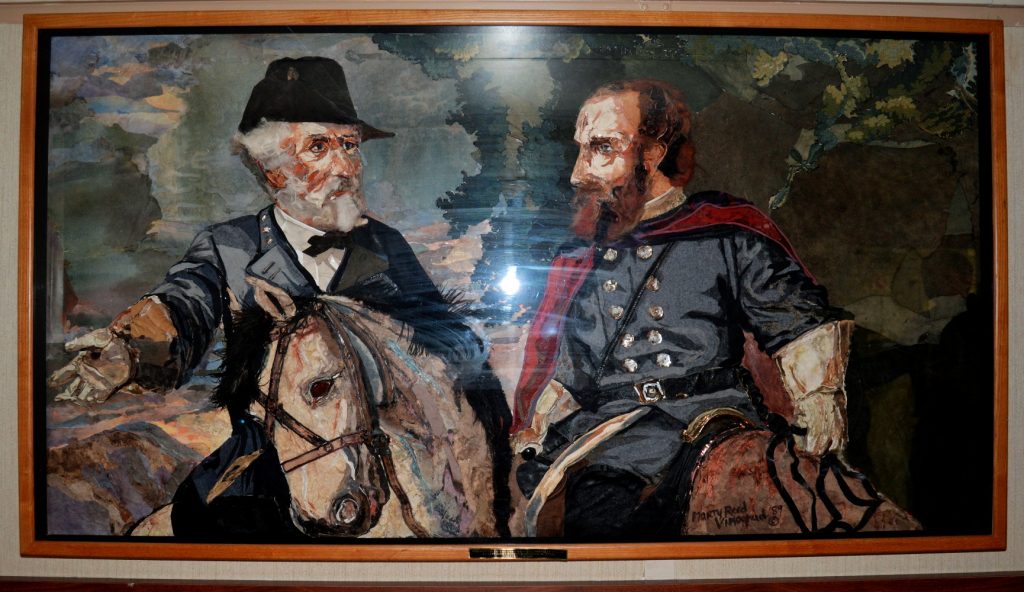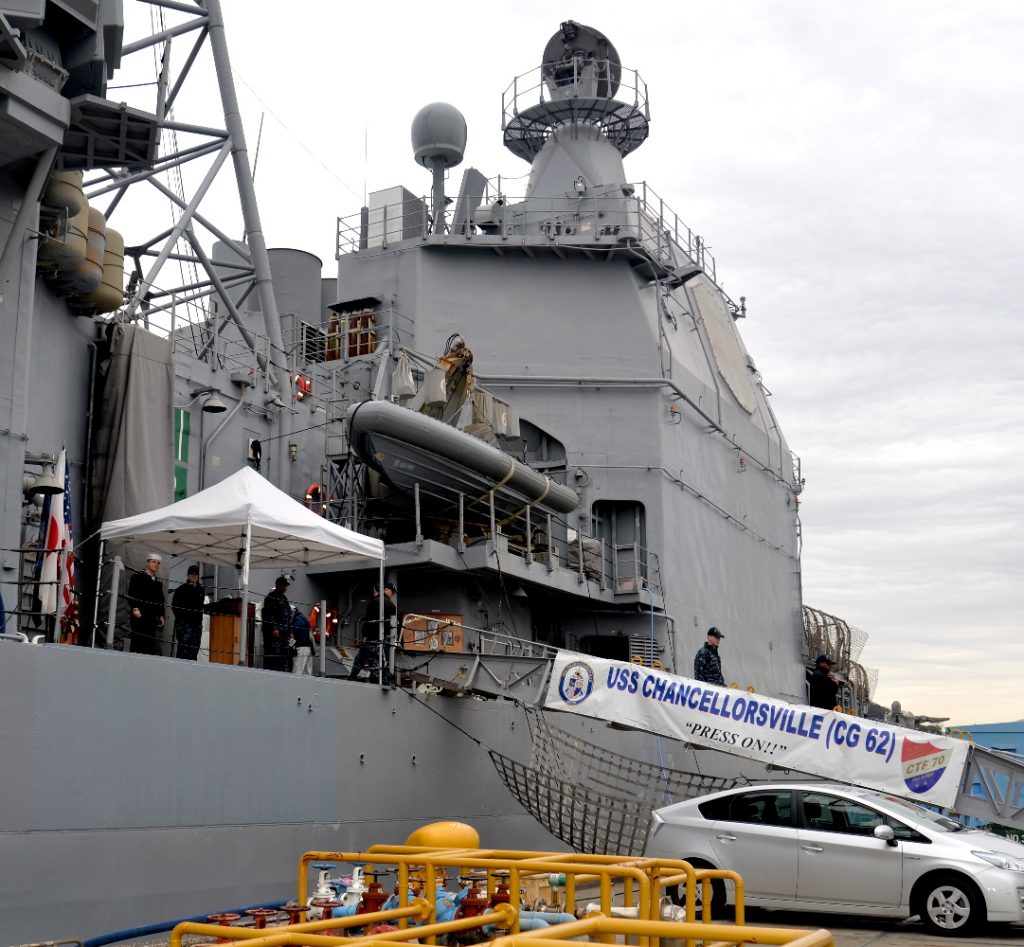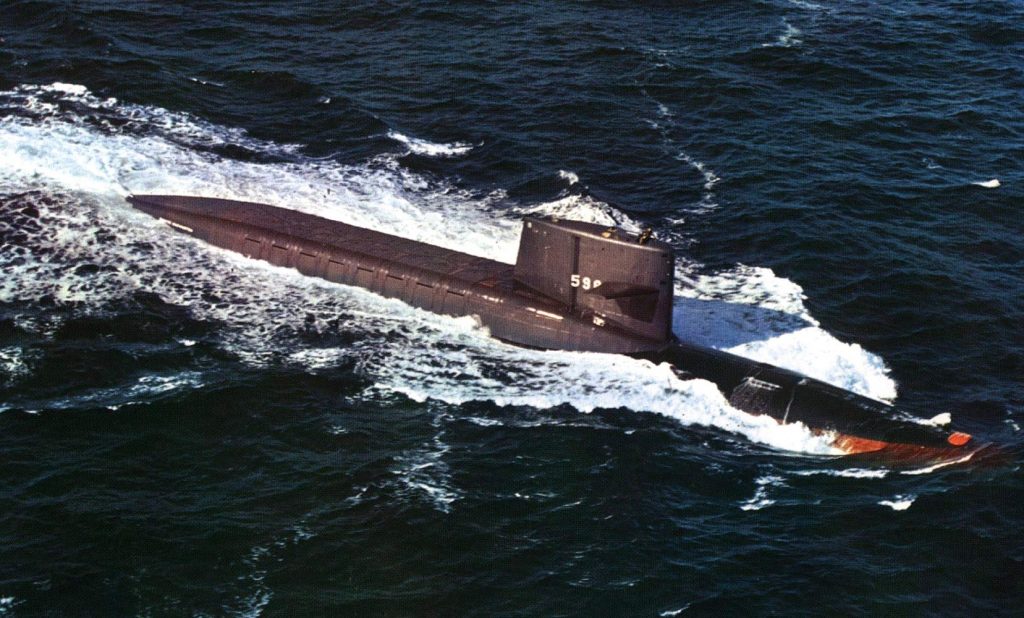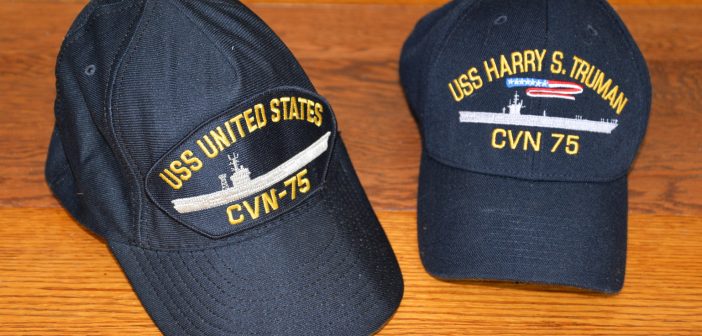It sometimes happens – for a variety of reasons
The nation-wide movement to remove names that honor or glorify the Confederate cause is an issue confronting the US military not just in the public eye but also in the halls of Congress. The Senate Armed Services Committee, in its June 11 markup of the Fiscal Year 2021 National Defense Authorization Act, inserted a provision:
“Establishing a commission to study and provide recommendations concerning the removal, names, symbols, displays, monuments, and paraphernalia that honor or commemorate the Confederate States of America, addressing an implementation plan, cost, and criteria for renaming, among other procedures. The implementation plan is to be implemented three years after enactment.”

The brow of the cruiser USS CHANCELLORSVILLE proclaims the ship’s motto, “Press On,” part of a directive from Confederate Gen. Robert E. Lee after his deputy Gen. Stonewall Jackson was wounded during the Battle of Chancellorsville in 1863. The painting of Lee and Jackson, photographed in 2016, is displayed in the cruiser’s wardroom. (Chris Cavas)
The Republican-led committee adopted the overall bill with a bipartisan vote of 25-2, and the measure now heads to the Senate floor for consideration. To become law it still needs to be adopted by the whole Senate, survive into the House-Senate NDAA conference bill and then signed by the president.
At immediate issue are ten US Army bases named for Confederate officers, as well as the cruiser USS CHANCELLORSVILLE (CG 62), which memorializes a land battle considered to be a Confederate victory, and USNS MAURY (T-AGS 66), a survey ship that honors Commander Matthew Fontaine Maury, the first superintendent of the US Naval Observatory and who gained worldwide fame as an oceanographer for the US Navy. Maury also served in the Confederate Navy, but since 1918 four US Navy ships have carried his name.
The Navy generally refrains from renaming its ships once they’ve entered service. Politics and social mores certainly play a part in choosing the names of new ships, and it is not unusual for a ship to be renamed one or more times prior to entering service, but it would be quite unusual for ships to be renamed in service due to changing sensitivities.
Renamings usually take place because of an imperative to quickly honor a person or event. They can also accompany a change in function such as converting a ship to a different purpose or because a naming scheme for a certain class of ships might change. Other changes might be for stylistic or administrative reasons and in those cases the core names are retained even if the rendering changes. Prior to construction names have often been swapped among ships of a class for a variety of reasons, including the symbolism of building a particularly-named ship in a particular state or city.
Ships acquired from private or other sources have also frequently been renamed, especially ships transferred from the US Army or US Coast Guard to naval service. Hundreds of ships transferred from other government agencies such as the Maritime Commission or the Maritime Administration have been renamed upon being acquired for US Navy service.
During World War Two new ships were often renamed for ships lost in combat or for other reasons. To perpetuate or commemorate the names faster the practice was to make the name changes to ships nearing completion rather than on new ships yet to be built.
Looking back over the past 120 years or so, here are some examples of name changes. Many of these instances involve types of ships or naming schemes long since discarded by the Navy. There are many more cases of name changes, far too many to list here.
The examples listed below use hull number designations to indicate a specific ship, as unlike ship names, hull numbers are almost never reused. The designations indicate a specific function – DD for destroyer, CV for aircraft carrier, for example. Although not always noted, in many cases the original names that were changed were used again on later ships.
And yes, it can get very complicated!

The brow of the cruiser USS CHANCELLORSVILLE proclaims the ship’s motto, “Press On,” part of a directive from Confederate Gen. Robert E. Lee after his deputy Gen. Stonewall Jackson was wounded during the Battle of Chancellorsville in 1863. The painting of Lee and Jackson, photographed in 2016, is displayed in the cruiser’s wardroom. (Chris Cavas)
Changes due to ships lost in combat
- Aircraft carrier USS BON HOMME RICHARD (CV 10) was renamed YORKTOWN in September 1942, prior to launch, to perpetuate the name of YORKTOWN (CV 5) lost in June 1942 during the Battle of Midway. Subsequently CV 31 was named BON HOMME RICHARD. Similarly, KEARSARGE (CV 12) became HORNET; CABOT (CV 16) became LEXINGTON, ORISKANY (CV 18) became WASP and VALLEY FORGE (CV 37) became PRINCETON.
- Heavy cruiser USS PITTSBURGH (CA 70) was renamed CANBERRA in October 1942 prior to launch to perpetuate the name of an Australian heavy cruiser sunk fighting with US forces during the Solomons campaign. A few weeks later the cruiser ALBANY (CA 72) was renamed PITTSBURGH prior to construction. The names of most of the US cruisers and destroyers lost in the same Solomons campaign were also quickly reused.
- Nine light cruisers of the CLEVELAND (CL 55) class were re-ordered in 1942 as light aircraft carriers. All lost their original “city” names – applied to cruisers — for traditional aircraft carrier names, a naming scheme which at the time included famous ships of the past and famous battles. For example, USS AMSTERDAM (CL 59) became USS INDEPENDENCE (CVL 22).
Change in naming scheme
- In the early 20th century armored cruisers were named for states, as were battleships. The naming scheme was changed during the 19-teens and all cruisers gained city names to free up the state names for new battleships. So, for example, USS CALIFORNIA (Armored Cruiser No. 6) became USS SAN DIEGO.
- During the course of World War Two it was decided to change the naming convention for escort carriers from bodies of water to battles. USS CHAPIN BAY (CVE 63), for example, became MIDWAY prior to launch in April 1943 to honor the sea battle. In September 1944 she was renamed SAINT LO as it was felt the name of the Midway battle was better suited to the new large aircraft carrier CV 41 then building. A month after the renaming, USS SAINT LO was sunk in combat during the Battle of Leyte Gulf.
Change in function
- The collier USS JUPITER (Fleet Collier No. 3) was converted in 1920 to become an aircraft carrier and renamed LANGLEY to honor an early aviation pioneer.
- USS CHICAGO (Armored Cruiser No. 14) was renamed ALTON in 1928 and redesignated IX 5 (miscellaneous auxiliary) after being decommissioned and used as a barracks ship.
- Escort carrier USS GILBERT ISLANDS (CVE 107) was renamed ANNAPOLIS (AGMR 1) in 1963 during conversion to become a major communications relay ship.
- Oceanographic research ship THOMAS G. THOMPSON (T-AGOR 9) (first intended to be named SILAS BENT) was renamed PACIFIC ESCORT in 1989 upon conversion to a training support ship (IX 517). She was again renamed GOSPORT in 1997.
Acquired from other sources
- Hundreds of Lend-Lease ships during World War Two were renamed depending on their status. Many escort aircraft carriers, destroyer escorts and other escort craft changed status and names depending on oft-changing transfer plans to allied navies.
- Three combat stores ships acquired in the early 1980s from the United Kingdom’s Royal Fleet Auxiliary were renamed upon entering US service: LYNESS became USNS SIRIUS (T-AFS 8), TARBATNESS became USNS SPICA (T-AFS 9) and STROMNESS became USNS SATURN (T-AFS 10).
- Five of the Spearhead-class Joint High-Speed Vessels of the 2000s were first intended for delivery to the US Army and were given Army names. They were renamed beginning in 2011 after it was decided all the ships would be operated by the Navy’s Military Sealift Command. Additionally all the JHSVs became EPF Expeditionary Fast Transports in September 2015. The ships are CHOCTAW COUNTY (T-EPF 2, ex-VIGILANT), MILLINOCKET (T-EPF 3, ex-FORTITUDE), TRENTON (T-EPF 5, ex-RESOLUTE), CARSON CITY (T-EPF 7, ex-COURAGEOUS) and CITY OF BISMARCK (T-EPF 9, ex-BISMARCK, ex-SACRIFICE). BISMARCK was renamed CITY OF BISMARCK on 19 October 2015 to distinguish the ship named for the city in North Dakota from the chancellor of Imperial Germany.

The name and designation of the submarine USS SCORPION (SSN 598) was changed in 1958 after the design and mission of the ship changed. The submarine was commissioned in 1959 as USS GEORGE WASHINGTON (SSBN 598), first of the famous “Forty-one for Freedom” ballistic missile submarines of the Cold War. Several of those submarines also bore names related to the Confederacy. (US Navy)
Political and other changes
- Aircraft carrier USS UNITED STATES (CVN 75) was renamed HARRY S. TRUMAN while under construction in 1995 as part of a reciprocal agreement between the Clinton Administration and the Republican-led Congress that named the new CVN 76 after RONALD REAGAN.
- USS HARRY BASS (DD 887) was renamed BRINKLEY BASS while under construction in 1945 at the request of the family; aviator Bass was better known by his middle name, Brinkley.
- USS BIDDLE (DDG 5), commissioned in 1962, was renamed CLAUDE V. RICKETTS on July 28, 1964 to honor Vice Chief of Naval Operations Admiral Claude Ricketts, who died July 6, 1964.
- Guided-missile destroyer DDG 52 was renamed at least three times prior to beginning construction in 1990 due to disagreements over how the name should be rendered. Named JOHN BARRY when a construction contract was awarded on May 26, 1987, the name was changed to BARRY on February 1, 1988; back to JOHN BARRY on May 9, 1989; back to BARRY on December 8, 1989 – the name she has carried ever since.
- Submarine USS SQUALUS (SS 192) was renamed SAILFISH in 1940. Twenty-six sailors died aboard the SQUALUS when it sank in an accident off Portsmouth, New Hampshire in 1939. The ship was raised, brought back to Portsmouth and rebuilt, re-entering service in 1940 with a new name in hopes the ship would have better luck.
- Submarine USS SCORPION (SSN 589) was renamed GEORGE WASHINGTON while under construction in 1958 to reflect a redesign and change in mission from an attack submarine to ballistic missile submarine SSBN 589.
- Submarine USS REDFISH (SSN 680) was renamed WILLIAM H. BATES while under construction in 1971 to honor a late congressman noted for his support of naval nuclear propulsion. The rationale for the then-controversial move was explained by Admiral Hyman Rickover with his famous quote, “fish don’t vote.” Subsequently several attack submarines of the 1970s received congressional namesakes from the start, and in 1983 the ballistic missile submarine RHODE ISLAND (SSBN 730) was renamed for the late Senator Henry M. Jackson shortly before her launch.
- Submarine CORPUS CHRISTI (SSN 705) was renamed CITY OF CORPUS CHRISTI in May 1982 a few weeks after her launch to make it clear the warship was named for the city in South Texas and not for the body of Christ.
Published 14 Jun 20 730pm


![Cyber Report [Sep 07, 22] FDD’s Mark Montgomery & Ardalyst’s Michael Speca](https://defaeroreport.com/wp-content/uploads/2022/09/Screen-Shot-2022-09-07-at-11.58.51-AM-214x140.png)
![Northrop Grumman Cyber Report [Feb 16, 22]:Mark Montgomery on Russia, Attacks at Home & Legislation in Work](https://defaeroreport.com/wp-content/uploads/2022/02/Screen-Shot-2022-02-16-at-7.52.25-PM-214x140.png)
![CAVASSHIPS Podcast [Jul 31, 21] Episode 8…Rest In Peace Snort](https://defaeroreport.com/wp-content/uploads/2021/06/CAVASShips_Podcast-214x140.jpg)